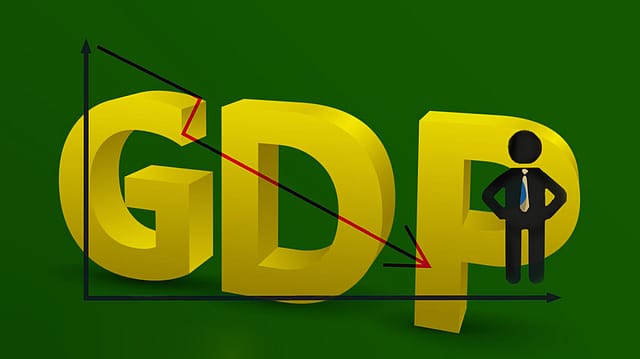India Ratings cuts FY23 GDP forecast to 7-7.2%
ADVERTISEMENT

India Ratings and Research (Ind-Ra) on Wednesday lowered India's GDP growth forecast for the financial year 2022-23 to 7-7.2% from its earlier prediction of 7.6%.
The Fitch Group's rating agency said its economic growth outlook released in January 2022 is unlikely to hold in view of the global geo-political situation arising out of the Russia-Ukraine war.
Since the duration of Russia-Ukraine conflict continues to be uncertain, Ind-Ra has created two scenarios with respect to the FY23 economic outlook.
"In Scenario 1, the crude oil price is assumed to be elevated for three months, and in Scenario 2, the assumption is for six months, both with a half cost pass-through into the domestic economy. Ind-Ra expects GDP to grow 7.2% yoy in Scenario 1 and 7.0% yoy in Scenario 2 in FY23, compared to its earlier forecast of 7.6%," the rating agency said.
Consumer sentiment is likely to witness a further dent due to Russia's invasion of Ukraine leading to rising commodity prices and consumer inflation.
Ind-Ra expects consumption demand as measured by private final consumption expenditure (PFCE) to grow at 8.1% and 8.0% in Scenario 1 and 2, respectively, in FY23, as against its earlier projection of 9.4%.
December 2025
The annual Fortune 500 India list, the definitive compendium of corporate performance, is out. This year, the cumulative revenue of the Fortune 500 India companies has breached $2 trillion for the first time. Plus, find out which are the Best B-schools in India.
Investment demand, as measured by the gross fixed capita formation (GFCF), is the second-largest component (27.1%) of GDP from the demand side. Private capex by large corporates, which has been down and out over the past several years, had shown some promise lately in view of the roll-out of the production-linked incentive (PLI) scheme and increased manufacturing sector capacity utilisation driven by higher exports.
Ind-Ra, however, expects the surge in commodity prices and disruptions in global supply chain caused by the Russia-Ukraine conflict to take a toll on their sentiments and there is a likelihood that this capex may get deferred till more clarity emerges with respect to the conflict.
"Government capex, however, is unlikely to be dented. By scaling up the capex to GDP ratio for FY22 to 2.6% as per revised estimate from the budgeted 2.5% and budgeting the capex at 2.9% of GDP for FY23, the government has been showing its resolve to do the heavy lifting," the rating agency said, adding that it believes that the overall GFCF growth will not be impacted much and it will grow at 8.8% both in Scenario 1 and 2 in FY23, 10 basis points higher than January 2022 forecast.
Ind-Ra cautioned that a 10% year-on-year increase in petroleum product prices without factoring in currency depreciation is expected to push up Consumer Price Index (CPI) inflation by 42 basis points and Wholesale Price Index inflation by 104 basis points.
A 10% year-on-year increase in sunflower oil – 90% of which India imports from Ukraine and Russia – is expected to push Consumer Price Index inflation by 12.6 bps and Wholesale Price Index inflation by 2.48 bps. Both these events could increase the retail and wholesale inflation by 55 bps and 109 bps, respectively.
Ind-Ra estimates retail inflation to average 5.8% and 6.2% in FY23 in Scenario 1 and 2, respectively, as against the agency’s earlier forecast of 4.8%.
Due to a higher import bill for items such as mineral fuels and oils, gems and jewellery, edible oils and fertilisers, Ind-Ra expects the current account deficit to come in at 2.8% of GDP under Scenario 1 and at 3.2% of GDP under Scenario 2 as against its earlier projection of 2.3% of GDP.
Ind-Ra's analysis suggests that a $5 per barrel increase in crude oil prices will translate into a $6.6 billion increase in current account deficit.
The union government, according to Ind-Ra, is unlikely to scale down its fiscal support already announced in the FY23 budget. Even the RBI has so far resisted the temptation to tighten its monetary policy stance, despite retail inflation breaching its upper tolerance level. "Although there is a case for a 50 bps increase in the policy rates in FY23, the RBI may still opt for accommodation," it said.
